The 2024/25 La Liga season is officially underway, and Barcelona emerged victorious in their first competitive fixture in the Hansi Flick era.
Despite their decline in recent seasons, Valencia, led by Rubén Baraja, was poised to be a tricky encounter for Barcelona.
FCB had to come hot out of the blocks while lacking some of their elite talents, thanks to fatigue and injury.
Barcelona managed to
reverse a number of worrying traits that had plagued their 23/24 season under Xavi Hernández’s reign. They worked incredibly hard to minimise the negative consequences of wasted attacking opportunities and displayeddominance when closing out a well-earned 2-1 victory.
The Culers came away from the match with plenty to be optimistic about. They had watched their side move away from the chaos of last season and display some really promising tactics and dynamism orchestrated by their new German head coach.
Flick’s first La Liga match allowed us to understand just how much his footballing principles have already become engrained within the current Barcelona squad. His side exhibited excellent central progression through the use of a versatile midfield trio and a new pressing system to extract the best out of his elite forwards.
This Barcelona tactical analysis will begin by addressing how Barcelona managed to win their opening fixture, pinpointing the effectiveness of their work in and out of possession.
However, things weren’t always rosy for the Blaugrana.
Our analysis highlights ways in which Valencia found avenues to hurt a Barcelona defence that stood out as the club’s Achilles’ heel during the past 12 months.
Hansi Flick Formation For Barcelona FC
As you might have expected, Hansi Flick formation had Barcelona lined up on paper in the 4-2-3-1 formation.
Still, in the game, we often saw Barcelona building up through a lone pivot in Bernal, with Casadó and Raphinha working tirelessly as central midfielders to connect the play.
It is essential to highlight the two La Masia graduates, Marc Casadó and Marc Bernal.
Despite their age and relative inexperience, they produced mature performances and stood out as critical contributors to how Flick wanted his team to play in the early stages of build-up.
Bernal adopted the role of the lone defensive pivot, often tasked with dropping deeper to provide an immediate passing outlet for ter Stegen in goal.
His excellent mobility drew the two Valencia forwards into the central areas.
Here, we can see that Bernal’s ability to attract the Valencia forward allowed Martínez to instantly break the lines with a through pass into the feet of Casadó.
The opposition player was drawn away from his position, stopping the initial passing outlet.
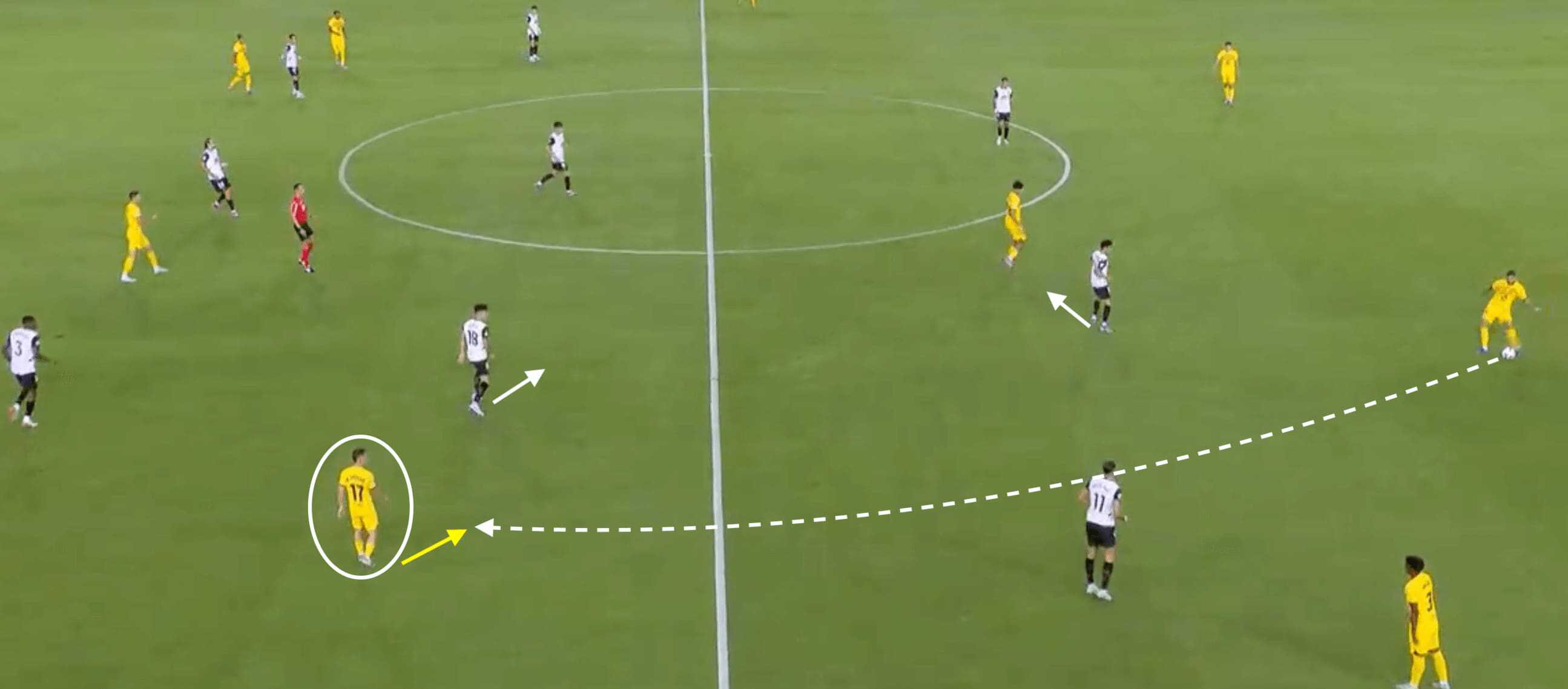
In moments when Barcelona looked comfortable on the ball—which was much more often than we have seen in recent months—Casadó worked hard to help break the Valencia press by picking up important pockets deep in the left half-space and forming crucial passing triangles between himself, Balde, and Iñigo Martínez.
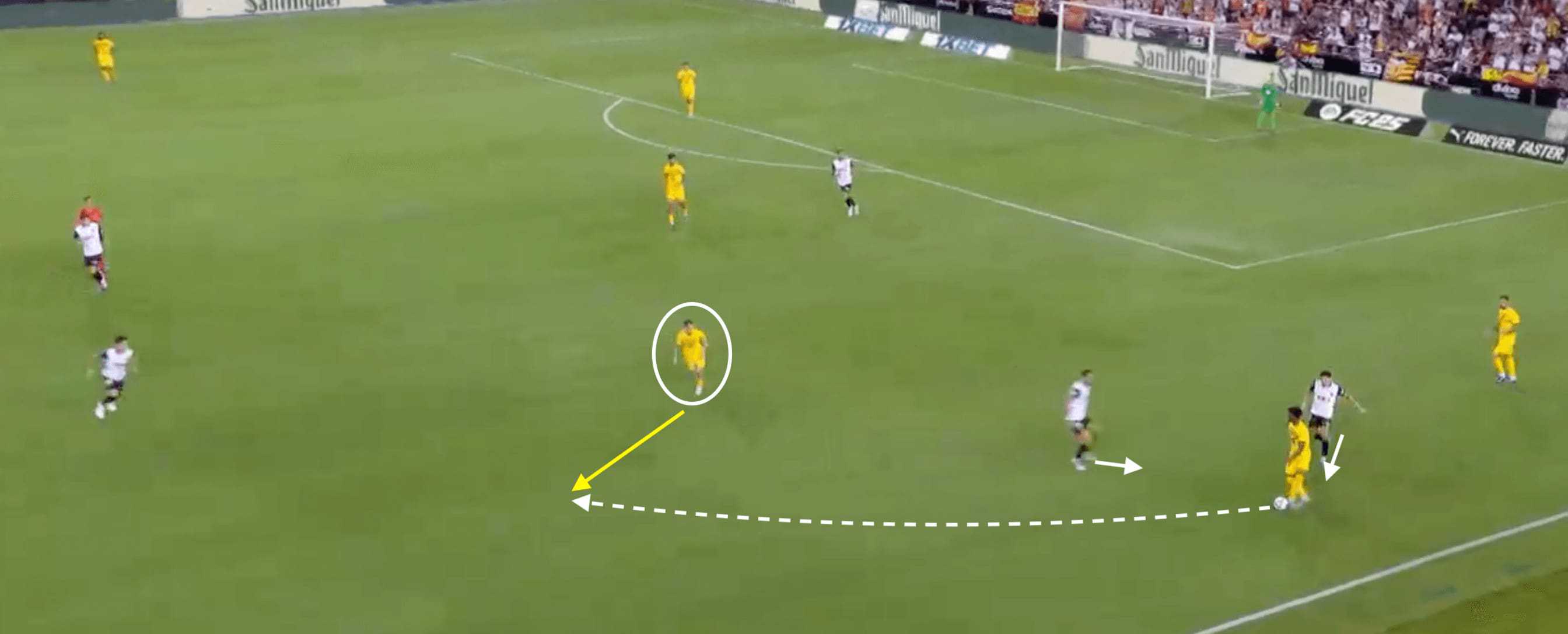
It is a testament to Flick’s tactic variation and collective cohesion that such tactics were successful despite the absence of many of Barcelona’s key figures.
We even saw Raphinha dropping into the right side of central midfield from his original spot behind Lewandowski, with the Brazilian also allowing Barcelona to be functional across both sides of the pitch.
The aforementioned performances of both Casadó and Bernal allowed Barcelona to manipulate Valencia’s pressing structure, allowing Barcelona’s central defenders to play much wider and be adventurous in their progression up the pitch.
Barcelona even created a three-man central defence with ter Stegen stepping forward to help circulate possession.
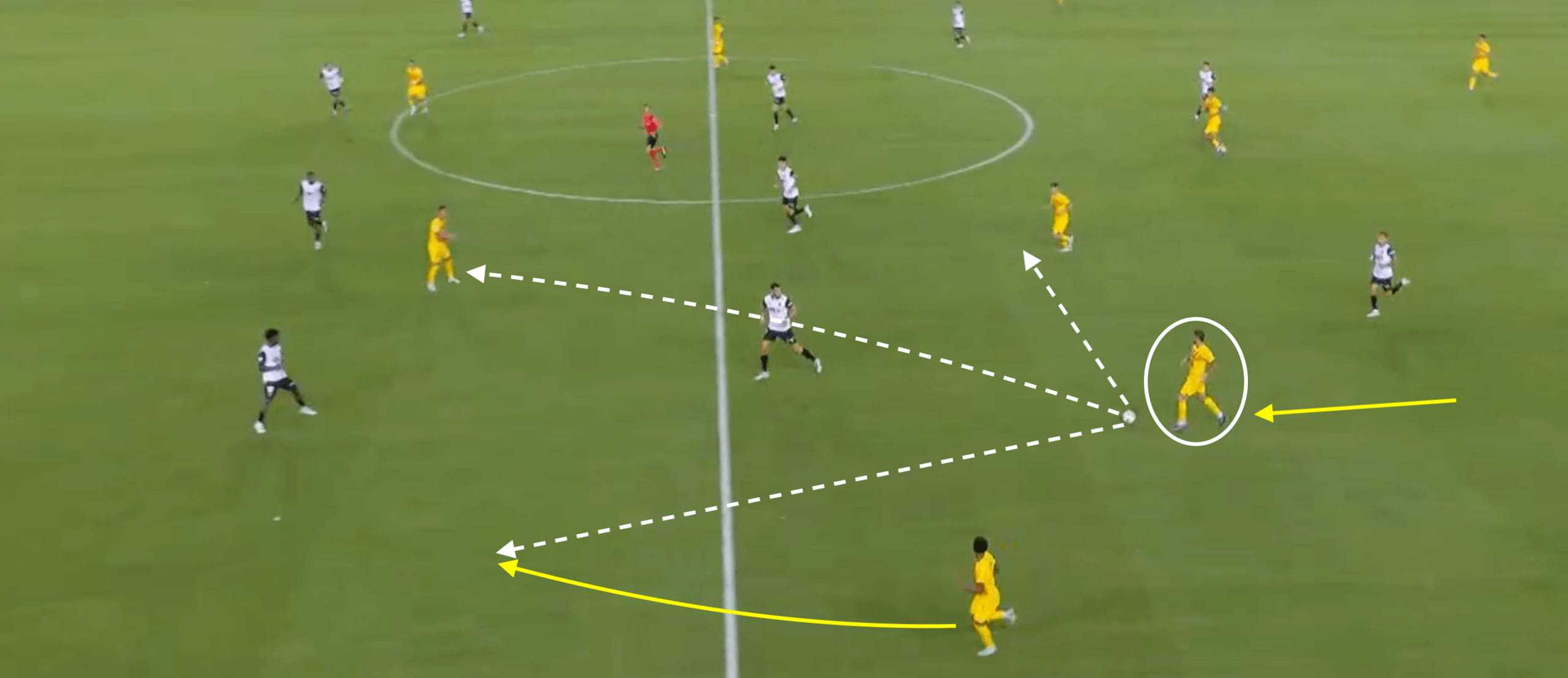
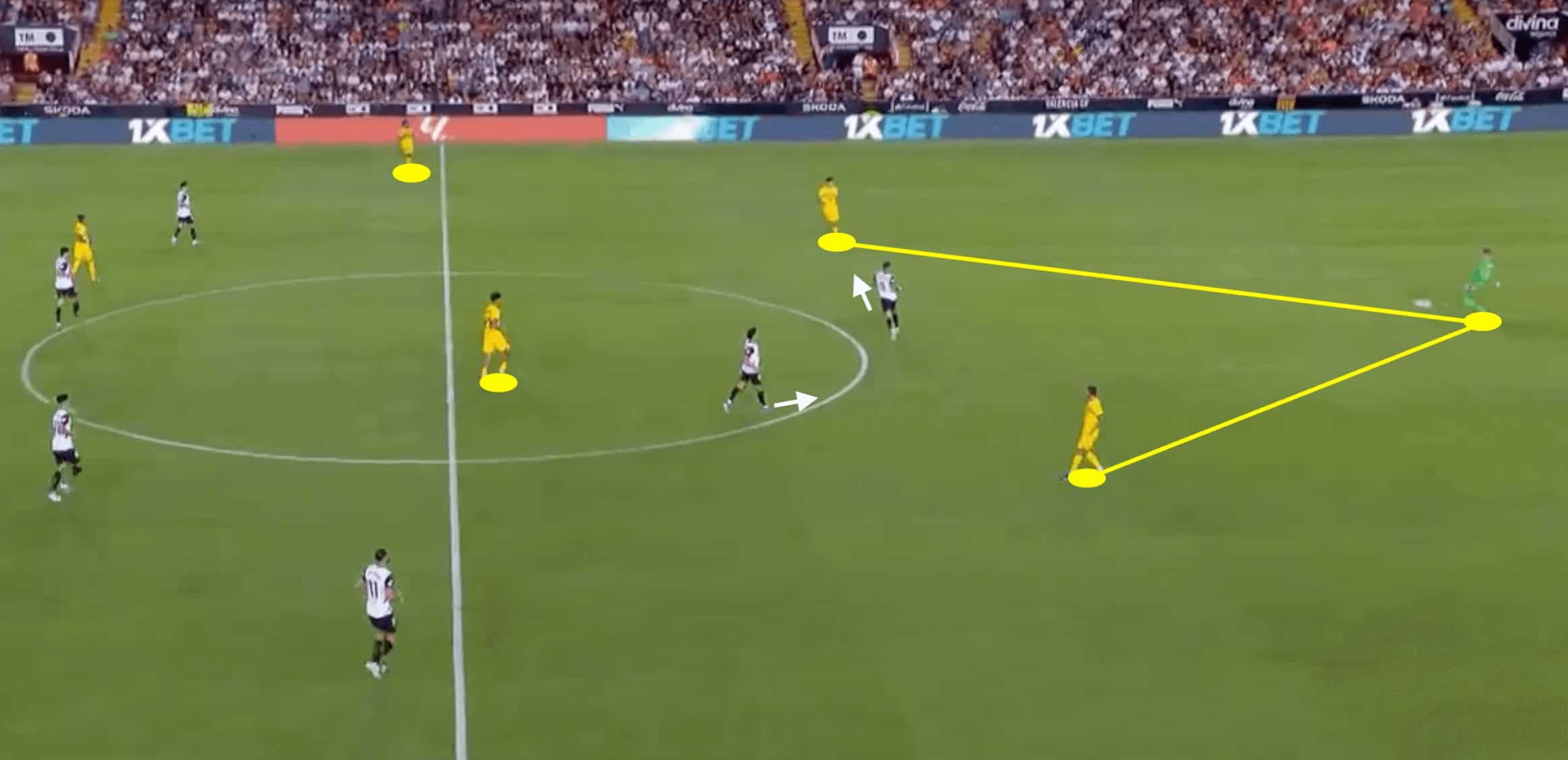
Danger On The Flanks
Even though Barcelona impressively found space within the central areas of the pitch, their progression on both flanks ultimately earned them all three points.
And for good reason.
We once again saw the importance of Barcelona’s international stars, fresh off impressive performances this summer at their respective competitions.
Yamal, Koundé, and Raphinha formed an impressive triangle on the right wing.
They have so many ways of hurting the opposition, so it was no surprise that 43% of Barcelona’s progression flowed through the right channel.
Lamine Yamal often draws double teams, which allows both Jules Koundé and Raphinha to threaten with underlapping runs through the right half-space.
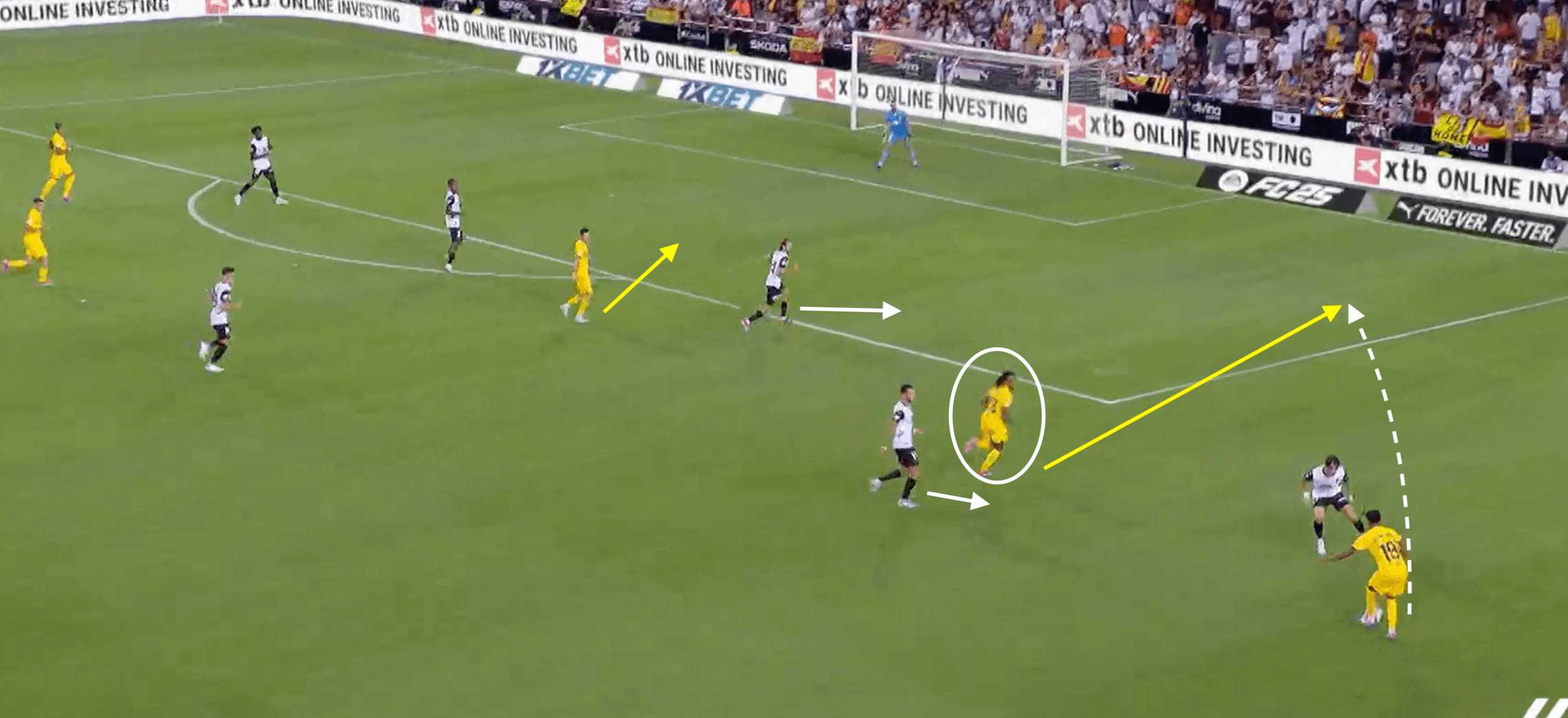
It also provided the option for the three to rotate.
It allowed Yamal to not feel so isolated out of the right-wing, with the positioning in and around the central areas of the pitch much more reminiscent of his summer escapades winning Euro 2024 with Spain.
The dynamic on the opposite flank was slightly different, but they benefitted tremendously from the natural defensive positioning of Valenica’s back line sliding across to cover the treat of Yamal in particular.
Ferran Torres was allowed to drift into the central areas of the pitch to pick up the ball, almost acting as Barcelona’s number ten when Raphinha would naturally move across to the right.
As shown below, Bernal was once again able to break the lines with a ball into the final third.
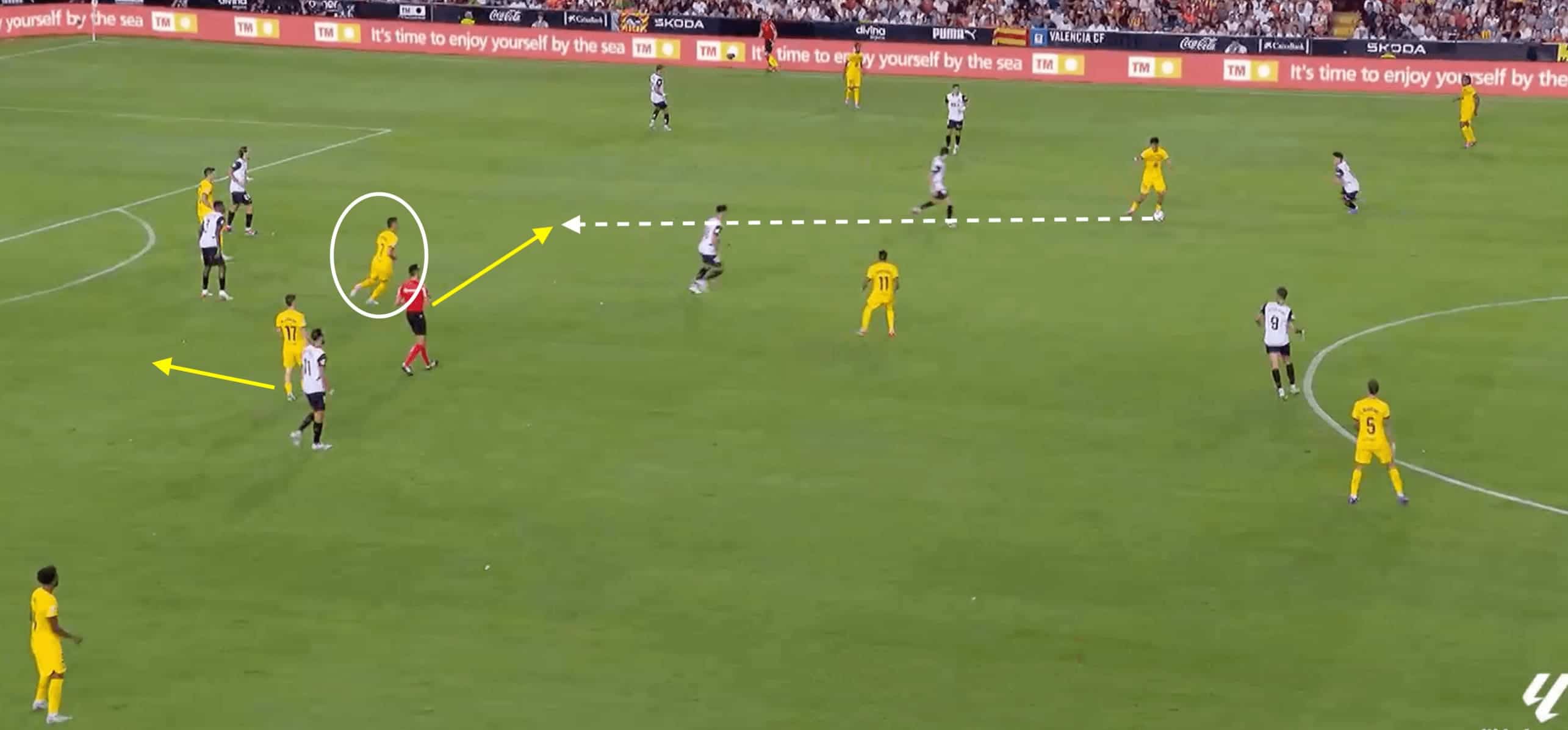
It created glaring opportunities for Alejandro Balde to race down the left flank and penetrate the penalty area, especially when Marc Casadó joined the attacking sequences as an advanced eight—a clear exploit that inevitably led to Barcelona regaining control of the match.
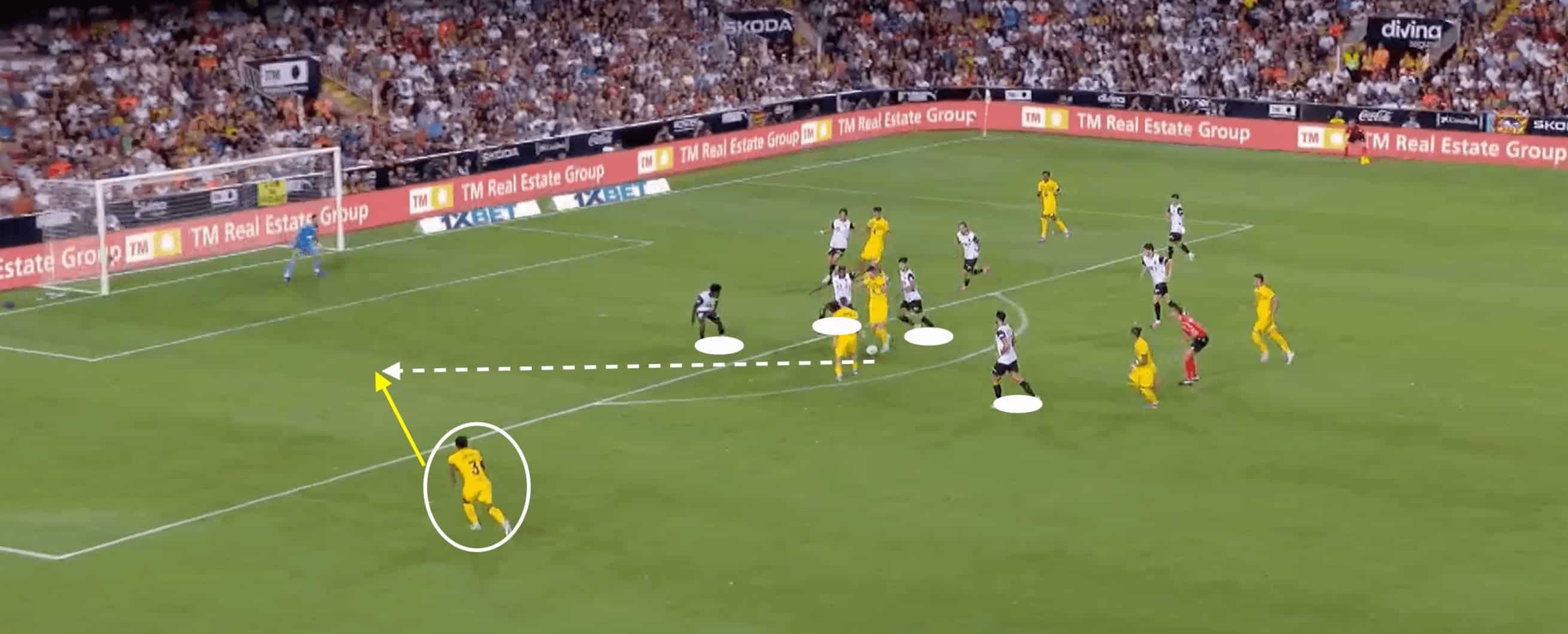
Raphinha was able to pick out Balde’s marauding run, with Valencia having completely vacated the right side of their defensive third.
The left-back was afforded all the time in the world to pick out Yamal at the back post with a pinpoint cross—eventually steering the ball across the six-yard box for Lewandowski to slide home.

It goes to show the threatening potential of this Barcelona attacking lineup, evidently benefitting from their manager’s desire to stretch the pitch both vertically and horizontally—and this is before we see the consistent introductions of both Dani Olmo and Pedri.
New-Look Pressing Structure
Throughout his time at FC Bayern and the German national team, Hansi Flick’s style of play has become synonymous with organising high-pressing sides- and this was no different when observing Barcelona’s opening match at the Mestalla.It would appear that Flick has recognised that Lewandowski may not be able to press with the same intensity and consistency that he exhibited when leading the line for Bayern.
The German coach has made a swift adjustment to Barcelona’s pressing structure to combat these issues.
Barcelona pressed in a 4-2-2-2 formation, with Lewandowski and Raphinha dropping into midfield to occupy both members of the Valencia double pivot.
When out of possession, the Polish striker became a midfielder.
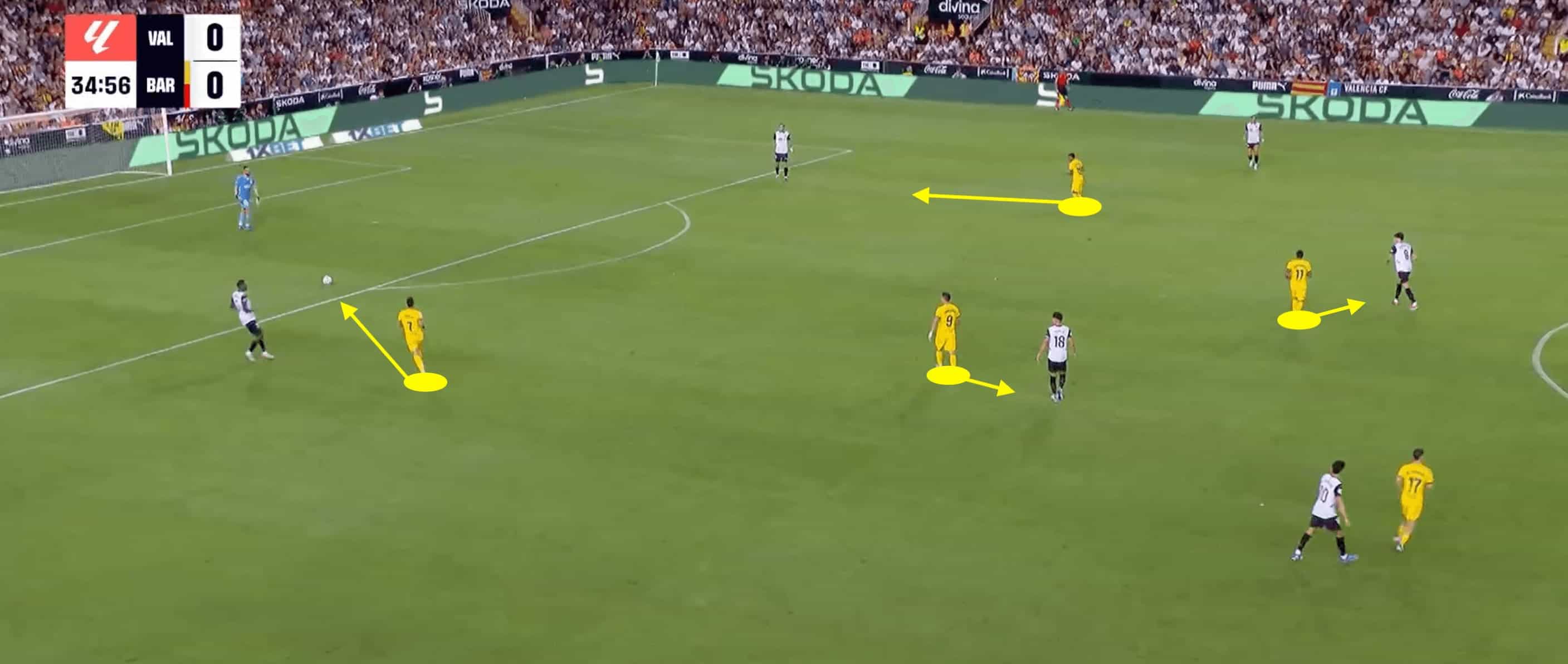
It was then Ferran Torres and Yamal who were asked to become Barcelona’s first line of resistance.
The wingers had to be proactive when pressing the Valencia central defenders.
Their inward movement aimed to funnel play down one of the flanks.
This allowed Barcelona to have another element of dominance when out of possession, with the likes of Casadó and Bernal also contributing to their defensive solidity in the middle third.
They showed an eagerness to cover out wide when necessary to help neutralise any Valencia overloads.
With many of the marking assignments and pressing positions funnelled through the central areas, both Koundé and Balde had to be very aggressive in their press to cut out any ball circulation towards the Valencia full-backs.
This is especially true when we see how much room Thierry Correia’s attacking figure had to operate when Balde was occasionally pinned back by Rafa Mir.
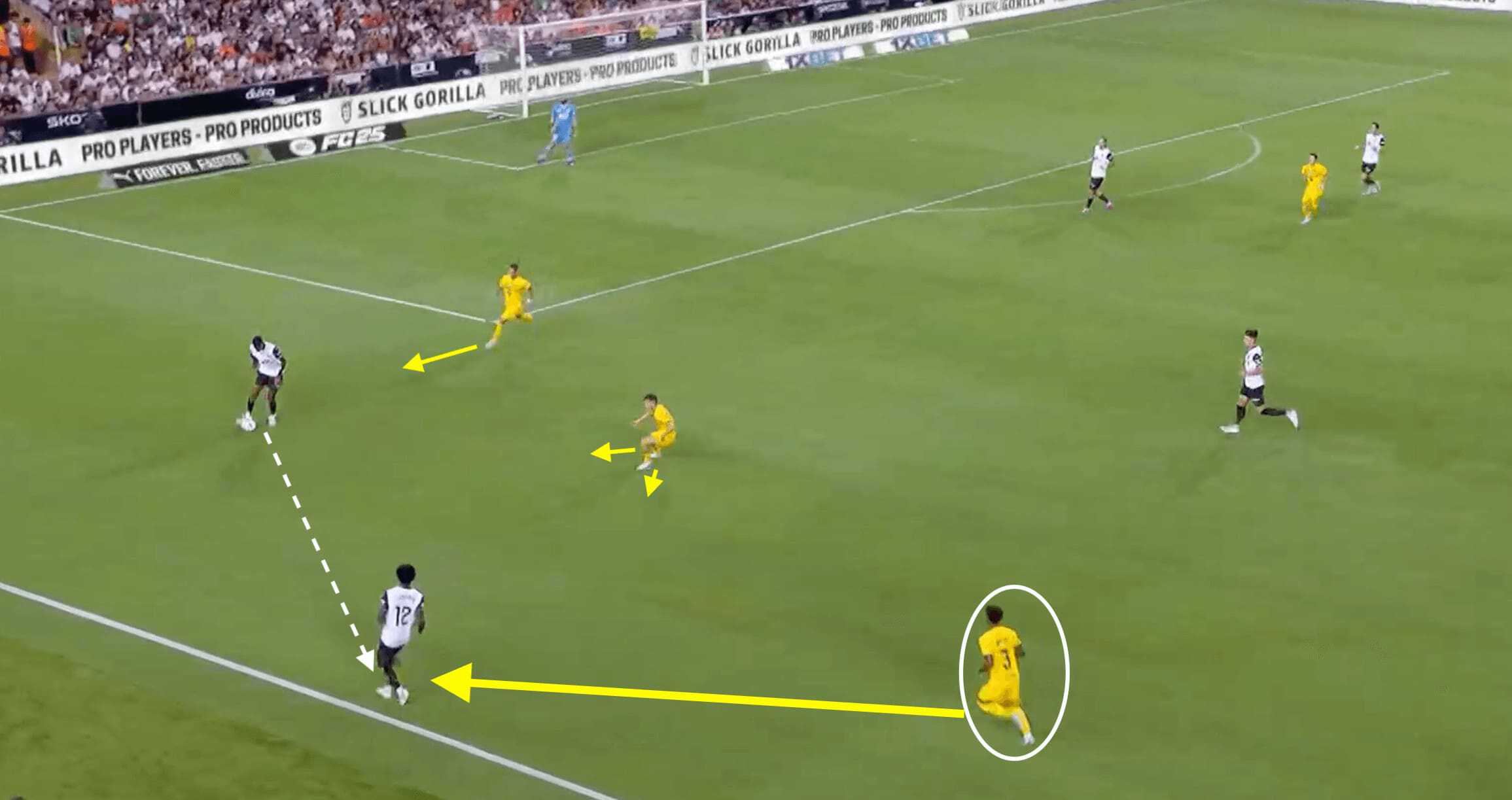
Issues arose for Barcelona when Koundé was unable to replicate Balde’s commitment on the right flank.
The Frenchman could not match his teammate’s recovery speed should his high-pressing efforts become fruitless.
This led to Valencia targeting Koundé with 2v1 attacks on the left wing, knowing that Jesus Vázquez would be offered more freedom to progress the ball up the pitch to combine with Diego Lopez.
Eventually, this led to Druro’s opening goal, with Koundé isolated and unable to stop the cross into the penalty area.
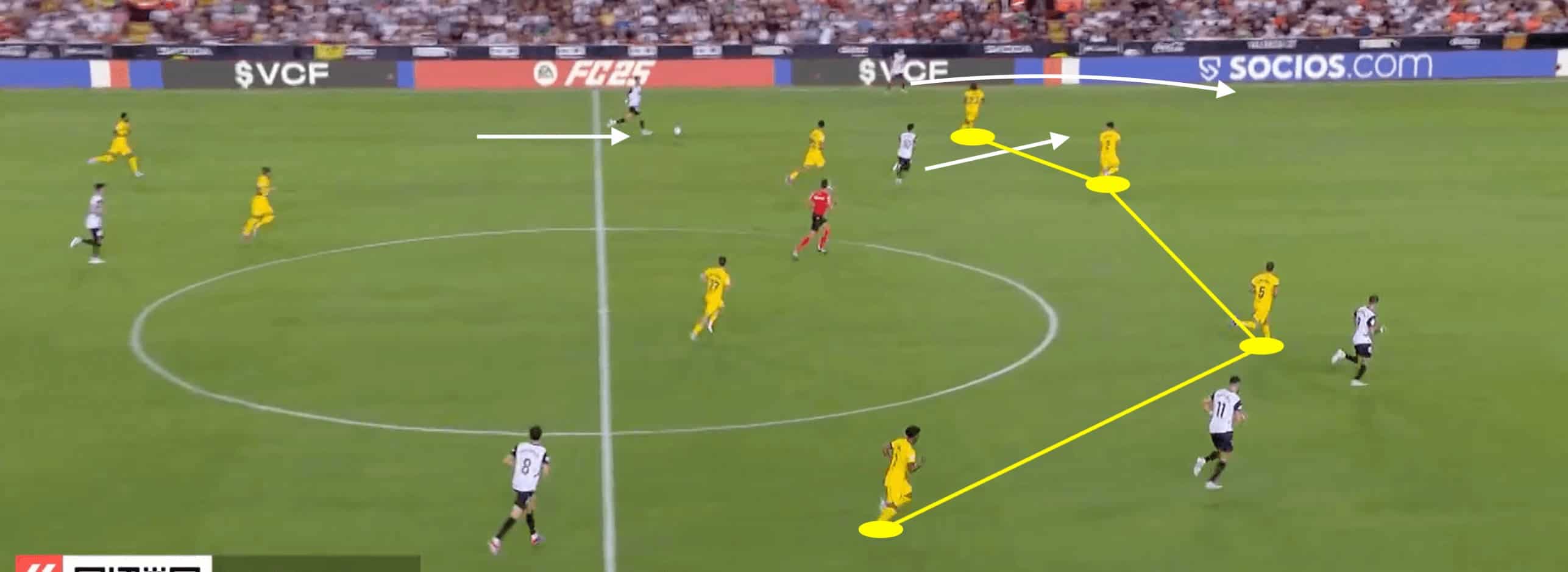
Barcelona’s 4-2-2-2 pressing structure certainly benefited their star striker and enabled him to be more proactive later in the match, but they must address their glaring weaknesses should they look to challenge the strongest teams in the division.
Conclusion
Whilst it may not have blown your socks off, Hansi Flick’s La Liga opener should fill the Barcelona fans with a lot of confidence, as they displayed spirited attacking sequences totalling an impressive 3.22 expected goals against a resolute low-block.
It was impressive to see how Hansi Flick’s formation was able to integrate some of Barcelona’s future stars.
His player selection appeared quite refreshing, and his willingness to experiment at these early moments of the season was evident.
Later in the match, we saw the introduction of Andreas Christensen, not as a defensive midfielder we saw under Xavi, but as a clear ball-playing centre-back, providing an essential balance between game management and the desire to progress play.
Fresh off a successful loan spell with Girona, Eric Garcia was tasked with occupying the defensive disruptor role at the base of midfield.
This decision contributed to Barcelona’s ability to neutralise any Valencia attacks in the second half and allowed them to coast to all three points.
Hansi Flick’s first competitive match as Barcelona’s manager allowed him to relieve some early pressure and showcase his tactical innovation, providing himself with an excellent platform from which to build in his pursuit of more European glory.

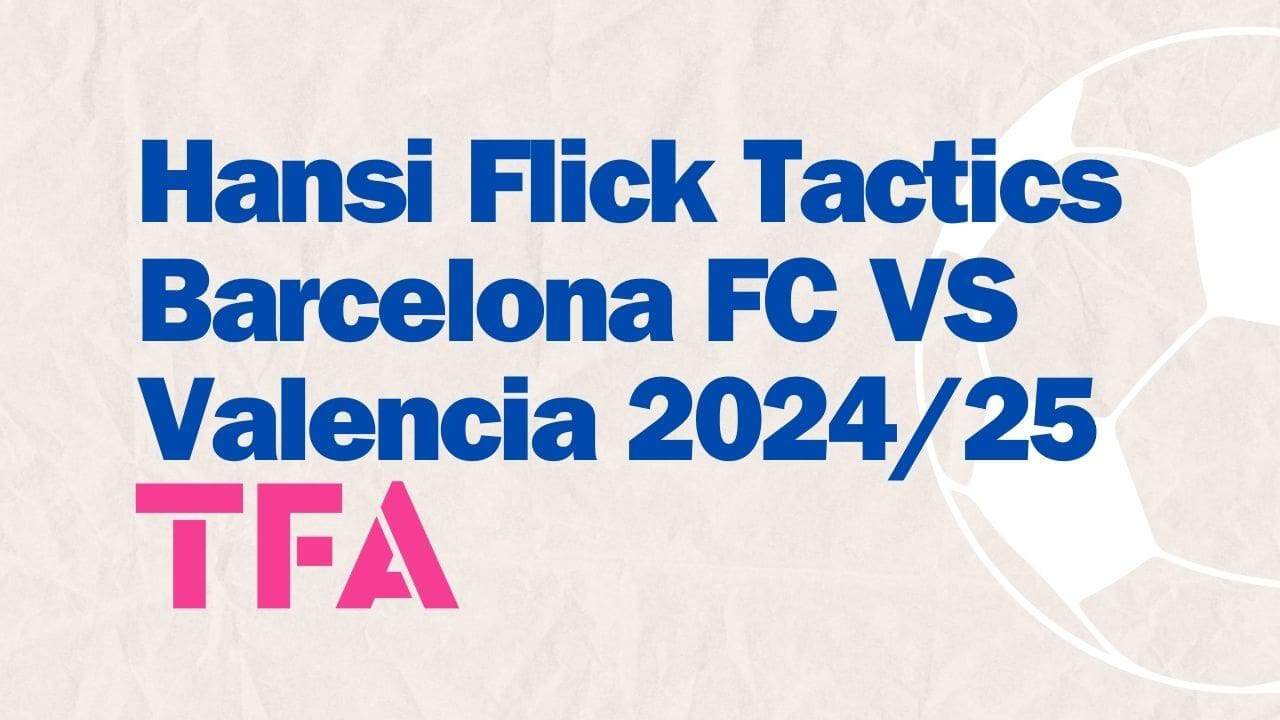



Comments